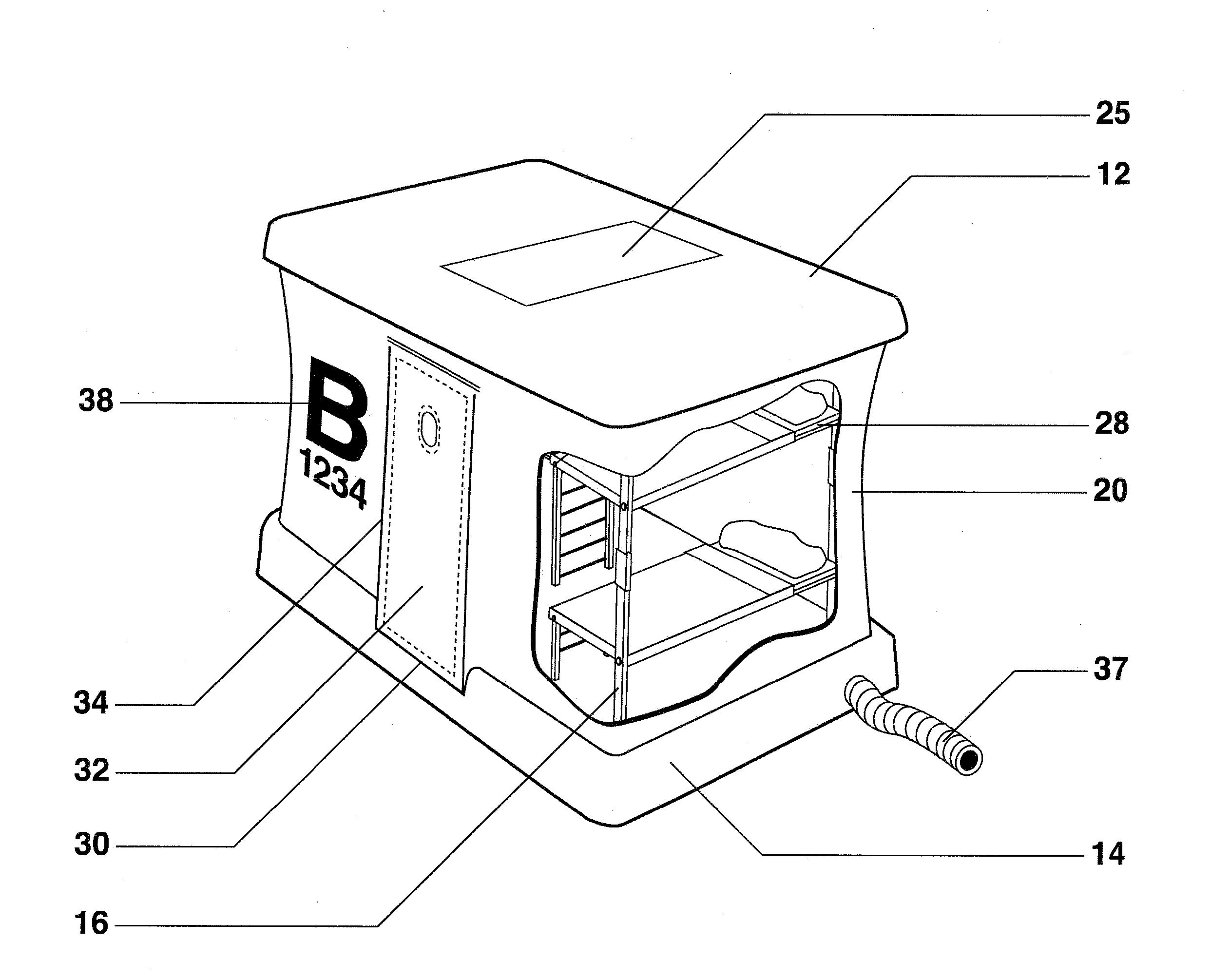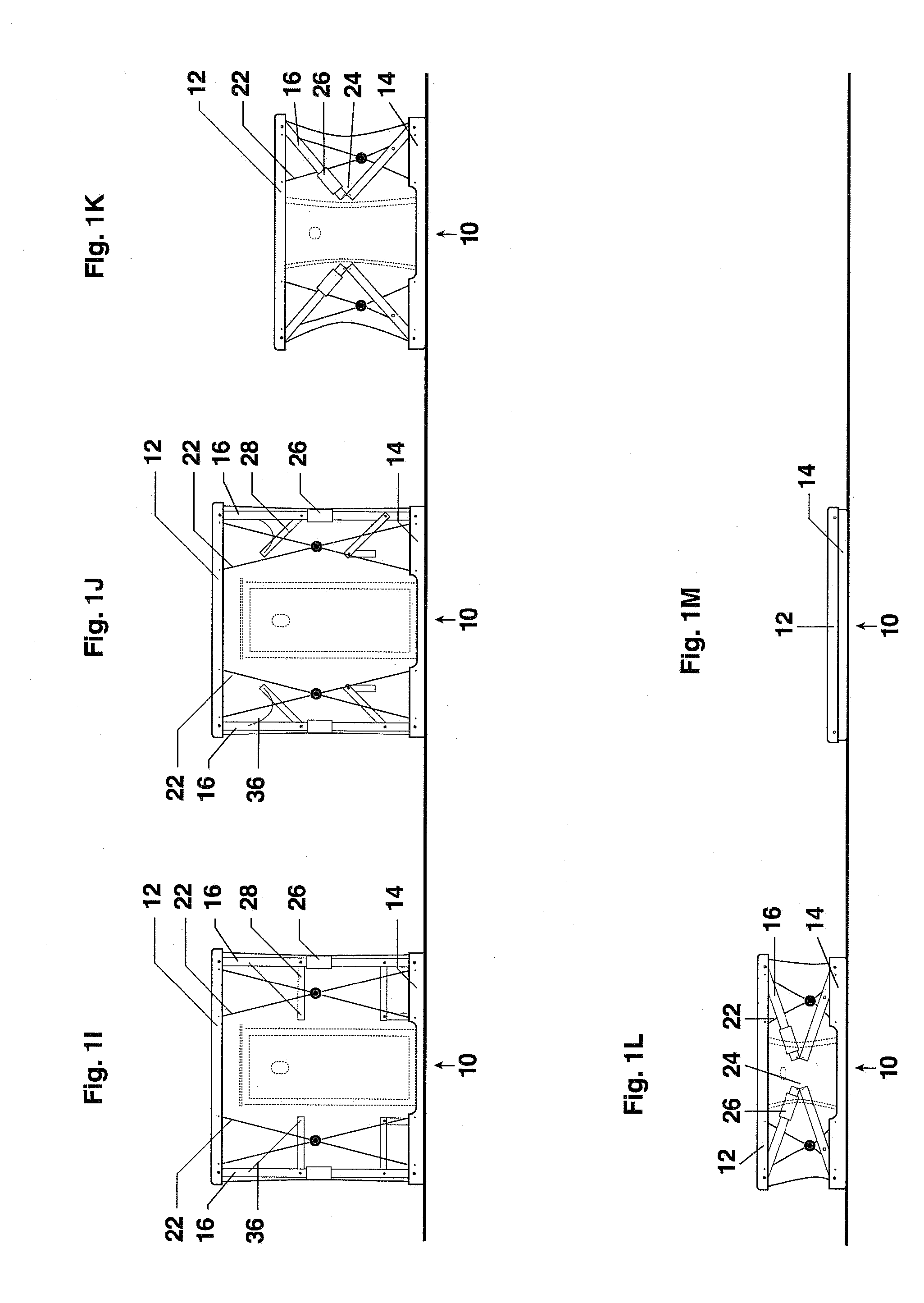Portable Shelters, Related Shelter Systems, and Methods of Their Deployment
a technology of portable shelters and shelter systems, applied in the field of portable shelters, can solve the problems of increasing victims' misery, housing gaps that exacerbate recovery efforts, and many houses are destroyed,
- Summary
- Abstract
- Description
- Claims
- Application Information
AI Technical Summary
Benefits of technology
Problems solved by technology
Method used
Image
Examples
Embodiment Construction
[0033]Referring now to FIGS. 1A-1R, these figures depict one particular embodiment of the present invention, specifically a soft-wall shelter of this invention. In the absence of any covering, FIG. 1A represents the plan view of shelter, FIG. 1B a front section of the shelter, FIG. 1C a side section of the shelter, and 1D a rear section of the shelter. FIG. 1E depicts a plan view of the shelter, FIG. 1F a front elevation view of the shelter, FIG. 1G a side elevation view of the shelter, and FIG. 1H a rear elevation view of the shelter. FIGS. 1I-1M represent the steps of collapsing a shelter from being erect to being completely collapsed and ready for transport or storage. Finally, FIG. 1N is a cut-away view of a particular embodiment of a soft-wall shelter. In this particular embodiment of the present invention a shelter 10 comprises a rigid top frame structure 12 which is generally rectangular in shape, a rigid bottom frame structure 14 which is generally the same size and shape of...
PUM
| Property | Measurement | Unit |
|---|---|---|
| shape | aaaaa | aaaaa |
| length | aaaaa | aaaaa |
| tension | aaaaa | aaaaa |
Abstract
Description
Claims
Application Information
 Login to View More
Login to View More - R&D
- Intellectual Property
- Life Sciences
- Materials
- Tech Scout
- Unparalleled Data Quality
- Higher Quality Content
- 60% Fewer Hallucinations
Browse by: Latest US Patents, China's latest patents, Technical Efficacy Thesaurus, Application Domain, Technology Topic, Popular Technical Reports.
© 2025 PatSnap. All rights reserved.Legal|Privacy policy|Modern Slavery Act Transparency Statement|Sitemap|About US| Contact US: help@patsnap.com



